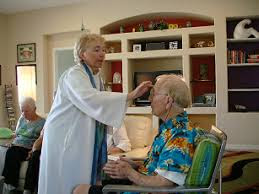If the new pope met with Roman Catholic Women Priests and listened to our experiences in inclusive Catholic communities and ministries, here’s what he could learn about continuing and deepening Pope Francis’ vision of “a Church for everyone”:
1. Radical Welcome Must Be Embodied, Not Just Preached
- In women-led inclusive communities, all are welcomed — not conditionally, not partially, but fully:
- LGBTQ+ persons are not just tolerated but celebrated.
- Divorced and remarried Catholics are fully integrated without hurdles.
- People of all races, genders, and backgrounds are treated as equals at the Eucharistic Table.
Lesson for the Pope:
Radical welcome cannot be only pastoral language — it must be built into structures, sacraments, and leadership. Pope Francis spoke often about a “field hospital Church”; women priests show how that field hospital actually operates.
2. Inclusive Leadership Heals Wounds
In inclusive Catholic communities led by women priests, leadership is shared and non-hierarchical:
- Decisions are made collectively.
- Ministries are shaped by listening and discernment circles.
- Titles matter less than relationships.
Lesson for the Pope:
A Church truly “for everyone” must model leadership as service and co-responsibility, not clerical control. This means that renewed priestly ministries are relational, connected and empowered in a community of equals.
3. Sacramental Life Belongs to the People.
Women priests in inclusive ministries emphasize open sacraments:
- In our Spirit-led sacramental communities, all are welcomed fully, without condition or exclusion. LGBTQ+ individuals are affirmed and celebrated. Divorced and remarried Catholics are embraced without canonical hurdles.
- People of every race, gender, background, and status are treated as equals at the Eucharistic table.
- No one is denied Communion based on baptismal or marital status, sexuality, or “worthiness.”
Lesson for the Pope:
Francis’ dream of a Church as a “Mother with open doors” (Evangelii Gaudium, §47) comes alive when sacraments are truly open to all who seek Christ.
4. The Margins are the Center
In many ordained women-led communities, the needs of the most marginalized shape the liturgy, outreach, and preaching:
- Immigrant justice, racial equity, LGBTQ+ rights, and ecological care are woven into the Gospel proclamation.
Lesson for the Pope:
A Church for everyone must make those on the margins the heartbeat of the Church, not an afterthought.
Liberation theologian Gustavo Gutiérrez said: “So you say you love the poor — name them!” Women priests show what that looks like in practice.
5. The Spirit Speaks Through Those Long Silenced
Women priests are living signs that the Spirit moves beyond the official structures:
- Despite excommunication, ridicule, or invisibility, women priests are bearing Gospel fruit.
Lesson for the Pope:
Listening to women called to priesthood could teach the new pope that the Spirit’s voice often comes through those whom the institutional Church has dismissed.
As Pope Francis wrote in a footnote in the document on pastoral care of divorced and remarried Catholics: “No one can be condemned forever. Because that is not the logic of the Gospel! Here I am not speaking only of the divorced and remarried, but of everyone in whatever situation they find themselves. God is not afraid of new things.” This should include Roman Catholic Women Priests in our international movement!
In Conclusion:
Roman Catholic Women Priests in inclusive Catholic communities and ministries embody what Pope Francis dreamed about: a synodal, humble, welcoming Church.
Women priests are not a threat to unity in the Church; we are a prophetic sign of an inclusive Church in which God’s Spirit is birthing something new!


No comments:
Post a Comment